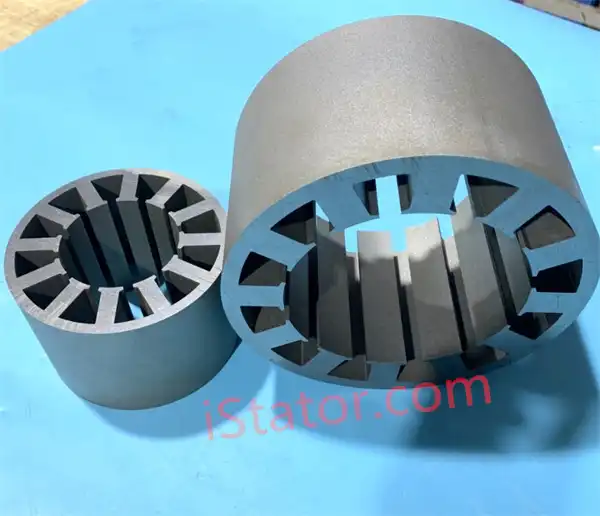In the field of motor manufacturing, the laminated bonding technology of stator and rotor is a key link to ensure the performance and service life of the motor. This article will provide you with a detailed step-by-step guide to stator and rotor laminated bonding technology to help you better master this key technique.
Understanding the importance of laminated bonding between stator and rotor
The stator and rotor are the two core components of the motor, and the quality of their laminated bonding directly affects the stability, efficiency, and service life of the motor. Good laminated bonding can ensure the stability of the stator and rotor during high-speed rotation, reduce vibration and noise, and improve the overall performance of the motor.
Preparation work
Before starting the lamination of stator and rotor, please ensure that you have made the following preparations:
Choose the appropriate adhesive
Choose an adhesive with good adhesion, heat resistance, and stability based on the material and usage environment of the stator and rotor.
Clean the surface of the components
Ensure that the stator and rotor surfaces are clean, free of oil stains, and rust to improve the bonding effect.
Prepare tools and equipment
Prepare the necessary tools and equipment such as scrapers, presses, heaters, etc., and ensure that they are in good condition.
Step of bonding stator and rotor layers
Next, we will provide a detailed introduction to the specific steps of bonding stator and rotor layers:
Coating adhesive
Use a scraper or other tool to evenly apply the adhesive to the surface of the stator and rotor. Pay attention to controlling the coating thickness to avoid being too thick or too thin.
Stacking Alignment
Align the stator and rotor components coated with adhesive according to the design requirements. Ensure accurate positioning between each layer to avoid any potential deviations in the future.
Apply pressure
Use a press or manually apply appropriate pressure to ensure that the adhesive can fully fill the gaps between each layer and improve the bonding strength.
Heating curing
According to the curing requirements of the adhesive, use a heater or other heating equipment to heat the stator and rotor laminates. During the heating process, attention should be paid to controlling the temperature and time to avoid overheating or insufficient heating.
Cooling and shaping
After the stator and rotor layers are cooled to room temperature, the shaping treatment is carried out. This helps to further improve the stability and dimensional accuracy of the components.

Precautions
During the lamination process of stator and rotor, please pay attention to the following points:
Operating environment
Ensure that the operating environment is clean, well ventilated, and avoid dust and impurities from adversely affecting the bonding effect.
Safety protection
When using high-temperature equipment such as heaters, it is necessary to pay attention to safety protection measures to avoid accidents such as burns.
Quality Control
During the entire process of bonding the stator and rotor layers, strict quality control must be implemented to promptly identify and address any potential issues. For key products, it is recommended to conduct detailed inspection and testing to ensure that their performance and quality meet the requirements.
Through the above step-by-step guide, we believe you have gained a deeper understanding of the laminated bonding technology for stator and rotor. As long as you practice seriously and constantly summarize your experience, I believe you will be able to master this key technology and contribute your own strength to the development of the motor manufacturing industry!
FAQS
What Are The Primary Benefits Of Self-Bonding Technology In Motor Lamination Stacks?
Self-bonding technology in motor lamination stacks offers enhanced efficiency, reduced noise and vibration, and improved thermal management. This technology enables more compact motor designs, crucial for space-sensitive applications. It also ensures higher precision and uniformity in the motor core, leading to better performance and longevity of electric motors.
What Materials Are Commonly Used In Self-Bonding Motor Laminations?
The most commonly used materials in self-bonding motor laminations are silicon steel and nickel-iron alloys. These materials are chosen for their excellent magnetic properties, which are crucial for efficient motor operation. Silicon steel, also electrical steel, in particular, is favored for its low core loss and high permeability, making it ideal for high-efficiency electric motors. Including 10JNEX900 material from Japan's Kawasaki Corporation, with a thickness of 0.1MM.
What Are The Challenges Of Self-Bonding Lamination Stacks?
Ensuring the consistency of coating thickness on the surface of the silicon steel sheet is a primary challenge. Additionally, managing the storage and timeliness of bonding varnish demands precision processing and testing equipment. These factors are crucial to maintaining the high-quality standards and performance of self-bonding lamination stacks.
What Are The Adhesive Materials Of Self-Bonding Motor Core?
The adhesive materials of self-bonding motor cores are typically EB540, EB546, EB548, EB549, and EB549 fast.
EB549 and EB549 fast are primarily used in new energy vehicle drive motors and small to medium-sized motor cores, providing excellent performance and reliability in these applications.
Applications Of Self-Bonding Motor Laminations
Self-bonding lamination stacks are most commonly used in new energy vehicle motors. They are also ideal for various other applications, including industrial motors, traction motors, renewable energy systems, and high-performance electric motors, offering enhanced efficiency, reduced noise, and improved durability across different sectors.
Transform your business with our leading glue-bonded lamination solution in China - Act Now!
We have achieved stator and rotor lamination factors greater than 0.97 and a product qualification rate of 0.98. We can customize motor stator and rotor laminations according to your motor size requirements.
You might also be interested in






